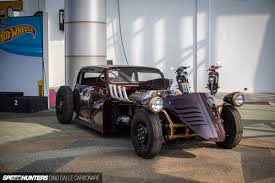ART OF CAR CUSTOMIZATION 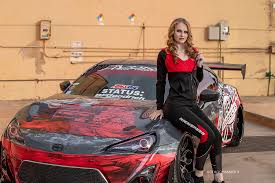
A thrilling fusion of engineering and art, car customisation enables enthusiasts to express their uniqueness and improve performance. The field of automotive customisation includes a wide range of styles, methods, and ideologies, from minor tweaks to major overhauls. This investigation will examine the many facets of automobile customisation, including as its background, prevailing fashions, methods, culture, and upcoming developments.
The History of Car Customization
The origins of car personalization can be seen in the early 1900s. Owners started to customize their cars as they became more widely available. Customization took off in the United States in the years following World War II, especially in the 1950s and 1960s. Hot rods became iconic after being altered for performance and speed. Enthusiasts started changing everything, from body forms to engine parts, creating a culture that valued uniqueness. The “import scene,” in which auto enthusiasts altered Japanese vehicles for performance and appearance, emerged in the 1970s and 1980s. Body mods, lowered suspensions, and distinctive paint treatments were also popular during this time. With the introduction of sophisticated music systems, LED lighting, and digital gauges in the 1990s and early 2000s, additional technologically driven customizations were made possible.
Popular Styles of Customization
- Performance Modifications
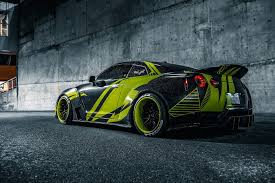
Many enthusiasts focus on enhancing a vehicle’s performance. This can include:
- Engine Tuning: Adjusting the engine’s parameters to improve horsepower and torque.
- Aftermarket Exhaust Systems: Upgrading to a performance exhaust system for better airflow and a more aggressive sound.
- Suspension Upgrades: Installing coilovers or air suspension systems to improve handling and ride quality.
- Braking Systems: Upgrading to larger, more efficient brakes to enhance stopping power.
- Aesthetic Modifications
Visual customization is another major aspect of car culture. Popular aesthetic modifications include:
- Body Kits: Adding front and rear bumpers, side skirts, and spoilers to create a more aggressive look.
- Custom Paint and Wraps: Unique paint jobs or vinyl wraps allow for endless creative expression.
- Wheels and Tires: Upgrading to custom rims and performance tires can dramatically change a car’s stance and handling.
- Lighting: Installing LED strips, custom headlights, and underglow kits for a distinctive nighttime appearance.
- Interior Customization
The interior of a vehicle is just as important as the exterior. Interior customization can include:
- Upholstery Upgrades: Replacing factory seats with custom leather or suede upholstery.
- Audio Systems: Installing high-end sound systems for superior audio quality.
- Custom Dashboards: Modifying the dashboard layout or installing digital displays for a modern look.
Techniques and Tools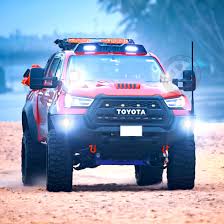
Car customization involves a variety of techniques and tools, many of which require specialized skills. Key techniques include:
- Painting and Wrapping: Mastery of spray painting or vinyl wrapping is crucial for aesthetic modifications. Proper preparation and application techniques can create flawless finishes.
- Welding and Fabrication: Custom parts often require welding. Skills in metalworking and fabrication allow for the creation of unique components.
- Electronics and Wiring: Many modern customizations involve electrical work, such as installing sound systems, LED lights, or advanced dashboards. Knowledge of automotive wiring is essential.
- Engine Tuning: Utilizing software and tools like dynamometers allows enthusiasts to tune engines for optimal performance.
The Culture of Car Customization
Car customization is not just a hobby; it’s a culture that fosters community and creativity. Car shows, meet-ups, and online forums are vital to this culture, allowing enthusiasts to share ideas, showcase their work, and connect with like-minded individuals.
- Car Shows and Events
Events such as SEMA (Specialty Equipment Market Association) and various local car meets provide platforms for showcasing customized vehicles. These events often feature competitions for the best customizations, bringing together talented builders and passionate fans.
- Online Communities
With the rise of the internet, forums and social media platforms have become essential for car enthusiasts. Websites dedicated to specific makes and models allow users to share their projects, seek advice, and find inspiration. Platforms like Instagram and TikTok showcase stunning builds and creative modifications, reaching a global audience.
Economic Impact
The car customization industry significantly impacts the economy. It supports numerous sectors, including:
- Aftermarket Parts Manufacturers: Companies producing performance parts, body kits, and accessories thrive in this industry.
- Labor and Services: Custom shops that offer installation and modification services employ skilled technicians, welders, and painters.
- Events and Marketing: Car shows and expos generate revenue through ticket sales, vendor booths, and sponsorships.
Challenges in Car Customization
While car customization is rewarding, it comes with its challenges:
- Legal and Regulatory Issues
Many regions have strict regulations regarding vehicle modifications, particularly concerning emissions and safety standards. Customizers must navigate these regulations to avoid fines or issues with vehicle registration.
- Costs
Customization can be expensive, and costs can quickly escalate, particularly with performance upgrades or unique aesthetic modifications. Enthusiasts need to budget carefully and prioritize modifications that provide the best value.
- Skill and Knowledge Requirements
Successful customization often requires a diverse skill set, from mechanical knowledge to artistic abilities. Enthusiasts may need to invest time in learning these skills or hire professionals for complex projects.
Future Trends in Car Customization
As technology evolves, so too will the world of car customization. Some anticipated trends include:
- Electric Vehicle (EV) Customization
With the increasing popularity of electric vehicles, customizers are beginning to explore modifications tailored to EVs. This includes performance tuning, unique body designs, and advanced tech integrations.
- Sustainability
As environmental consciousness grows, there is a trend toward sustainable customization practices. This can include using eco-friendly materials, such as recycled plastics and sustainable paints, as well as focusing on energy efficiency.
- Integration of Technology
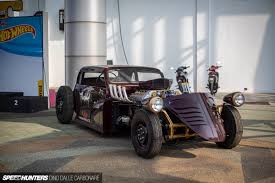
The integration of technology into vehicles is becoming more sophisticated. Customizers are increasingly incorporating smart technology, such as app-controlled features, advanced sound systems, and cutting-edge navigation systems.
Conclusion
Customizing cars is a dynamic art form that combines personal expression, engineering, and innovation. It cultivates a lively community of enthusiasts while celebrating individual flair and performance improvements. The field of automobile customisation will change as technology develops further, providing fresh chances for creativity and expression. Many people consider customisation to be more than simply a pastime; it is a passion that turns common cars into one-of-a-kind artwork. Car customisation enables people to express their individuality and build vehicles that represent their distinct identities, whether through performance improvements, cosmetic changes, or a mix of the two. Customization is an enduring and developing part of automotive culture since the process is just as fulfilling as the final destination.
